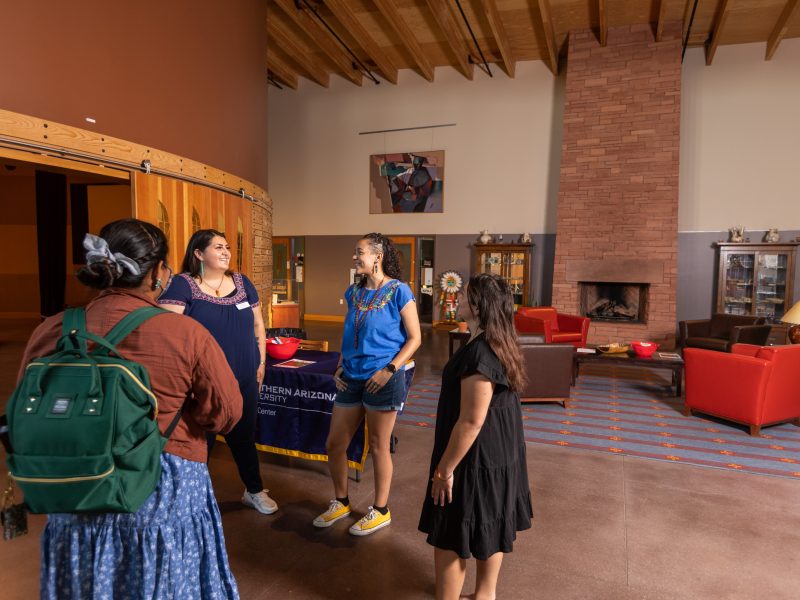For Northern Arizona University students
Eligible Havasupai tribal members enrolled as full-time, degree-seeking students at NAU could have all their direct educational costs covered under the scholarship.
Who is eligible?
- Havasupai tribal members enrolled as full-time, degree-seeking students at an ABOR university (NAU, ASU, or UofA) are eligible.
- All NAU learning modalities (Flagstaff, statewide locations, and Online) are eligible.
- Eligible members include all currently enrolled members of the Havasupai Tribe and their enrolled children from family households, as well as children of individual plaintiffs who were parties to the March 2010 settlement agreement with ABOR.
What it covers
- The program covers full-time enrollment for admitted undergraduate and graduate recipients for five consecutive academic years (fall and spring).
- The program will provide a total of 30 undergraduate scholarships, with a maximum of four new awards per year across the three ABOR universities.
- The program covers estimated direct educational costs, including actual tuition, program fees, mandatory fees and standard allowances for housing and meals, plus books and supplies.
- It does not cover indirect costs such as transportation, loan fees, and personal expenses.
Requirements and getting started
- Eligible students are required to apply for other non-loan financial aid offered by the university and federal and state agencies. Financial support from these sources will make up part of the Havasupai Promise Scholarship.
- Students must complete the Free Application for Federal Student Aid (FAFSA) to be eligible for the Havasupai Promise Scholarship. Be sure to use NAU school code 001082 and file by NAU’s priority filing date of April 1.
Renewal
This scholarship is renewable annually, provided students meet certain eligibility requirements that qualify as “Satisfactory Academic Progress.”
How it’s processed and fulfilled
1. A budget of your estimated direct costs is created. This includes:
- actual tuition and mandatory/program fees
- standardized allowance for housing and meals
- standardized allowance for books and supplies
2. Federal law requires the university to take a student’s Expected Family Contribution (EFC) into account. Your FAFSA will be used to calculate the EFC. Your EFC will then be subtracted from your estimated direct costs.
3. The remaining estimated direct costs will be covered by a combination of gift aid from federal, state, private, and institutional sources. The gift aid will be a combination of scholarships and grants (e.g., Pell Grants, Federal Supplemental Educational Opportunity Grants, institutional grants, and scholarships).


